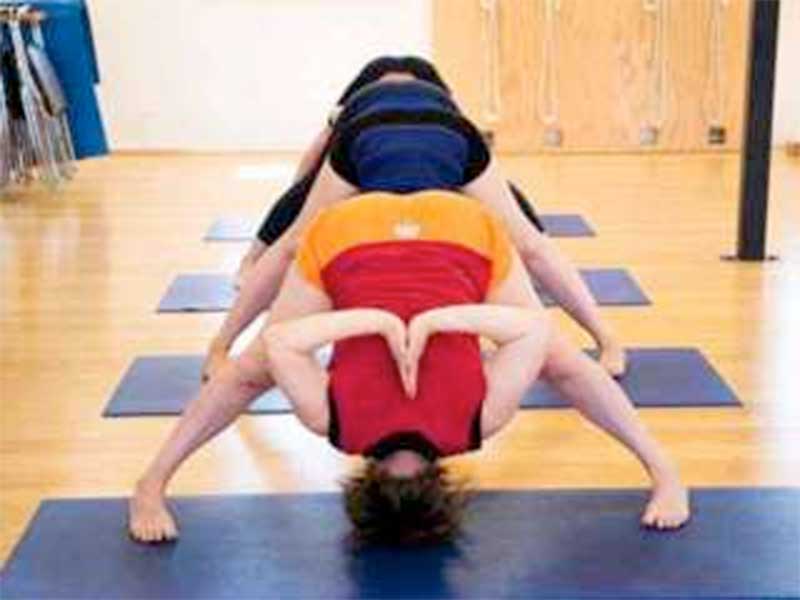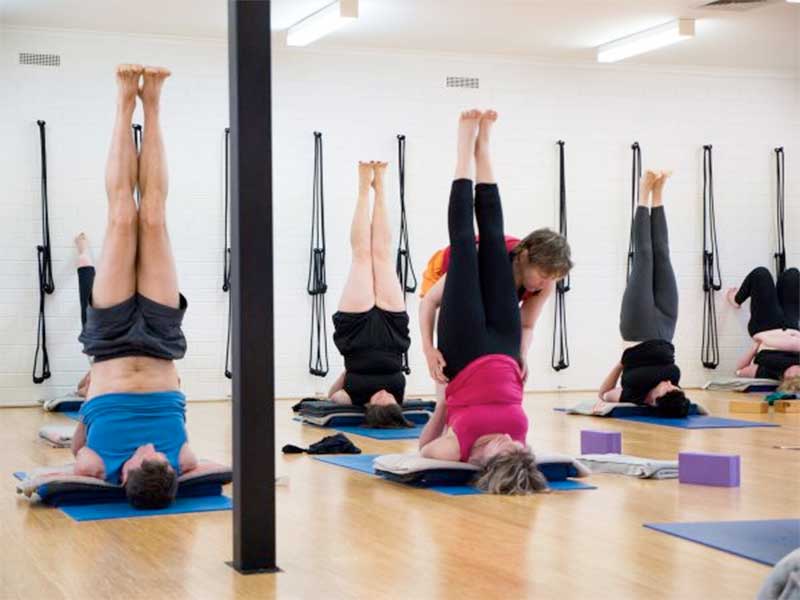
Why do we focus so much on standing poses in Iyengar Yoga?
When beginner students first start Iyengar yoga, it is typical for the teacher to introduce the standing poses first (of which there are eighteen).
The standing poses are strong dynamic asanas that can be difficult to perform initially. When taught and performed correctly, standing poses educate the legs, teaching them how to straighten and support body weight correctly. For many people the legs are inherently tamasic (dull, heavy, inert) and they need to learn to become more rajasic (active, dynamic).
I often say to students that they need to learn to ‘switch on’ the quadriceps muscles to be able to pull up the knees. Most students understand what I am saying, but in the beginning find it difficult to activate the thigh muscle which may have been ‘dormant’ for many years. The nervous pathway from the brain to the quadriceps that allows the message to be sent “pull up the thighs” is inactive. It takes time to (re)establish this link. Once the nerves can send the message to activate these muscles, it gets easier. And that’s why this practice requires focus and concentration, so that you can become adept at sending messages to the various parts of the body to activate them.
This is also true for students who play or practice sport that requires strong use of the legs such as running, cycling and swimming. The leg action required in standing poses (pulling the quadriceps up to the groins and drawing the muscle back on the femur) is not required in these sports. And yet if you learn how to activate the legs in this manner in the standing poses, the legs will perform better in these other sports.
Done correctly, the standing poses give us access to the pelvic area bringing flexibility and stability to the hips and groins. If the hips and groins are tight or closed (as is true for most beginner students), the sitting poses and forward bends will be difficult or even impossible to achieve. The inversions also cannot be done. Given that standing poses bring flexibility to the hips, hamstrings, spine and groins, they are a pre-requisuite if you like before learning to bend forward. Iyengar said that we must learn to stand on our feet before we try to stand on our head. It is the action of the legs that pulls us up out of the spine in the inversions avoiding compression of the neck. Learning the standing postures first will help to avoid injury during yoga practice in the future.
The standing poses also allow access to the spine so that poor spinal posture or imbalance and injuries can be addressed. The standing poses develop awareness of the correct way to stand. Head erect, shoulders back, legs and buttocks firm. I often say to students that after learning Tadasana (mountain pose) and the standing poses for a few weeks, standing in a queue will never be the same again – the imprint of the poses is so strong that you remember to stand up straight with the shoulders back. Slouching or leaning heavily on one leg becomes a thing of the past.
Energy is usually lacking in beginner students, their bodies are often dull, heavy and lethargic (by the way you don’t have to be overweight to be this way). Standing poses infuse the body with energy. They are invigorating. In the book Yoga the Iyengar Way by Silva, Shyam and Mira Mehta, the authors state that standing poses “refresh the body and mind by removing tension, aches and pains. They stimulate digestion, regulate the kidneys and relieve constipation. They improve circulation and breathing. The back, hips, knees, neck and shoulders all gain strength and mobility through practice”. I couldn’t say this any better myself so I have included this excerpt from their book. I have found this to be completely true in my own practice. Because I want to continue to derive these benefits and overcome lethargy, I practice standing poses (usually with other groups of poses) about four times per week.
“You should do the asanas with vigour and at the same time be relaxed and composed”

